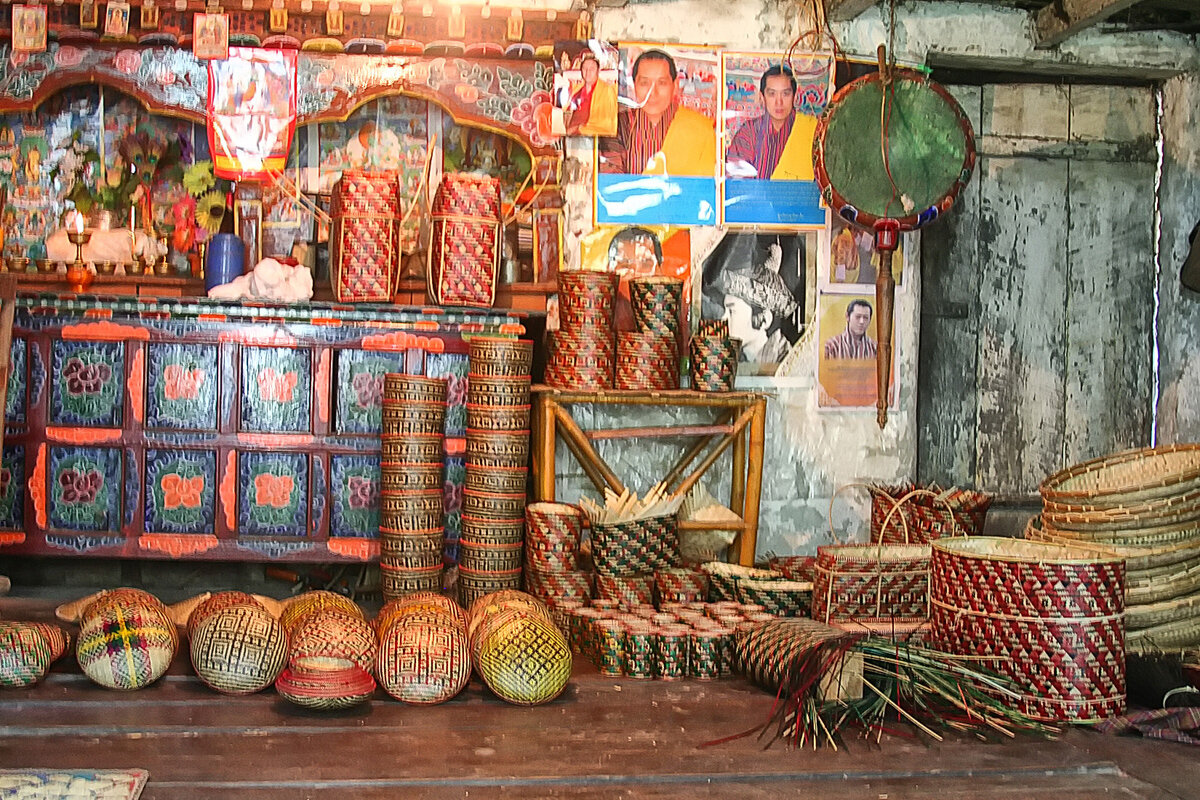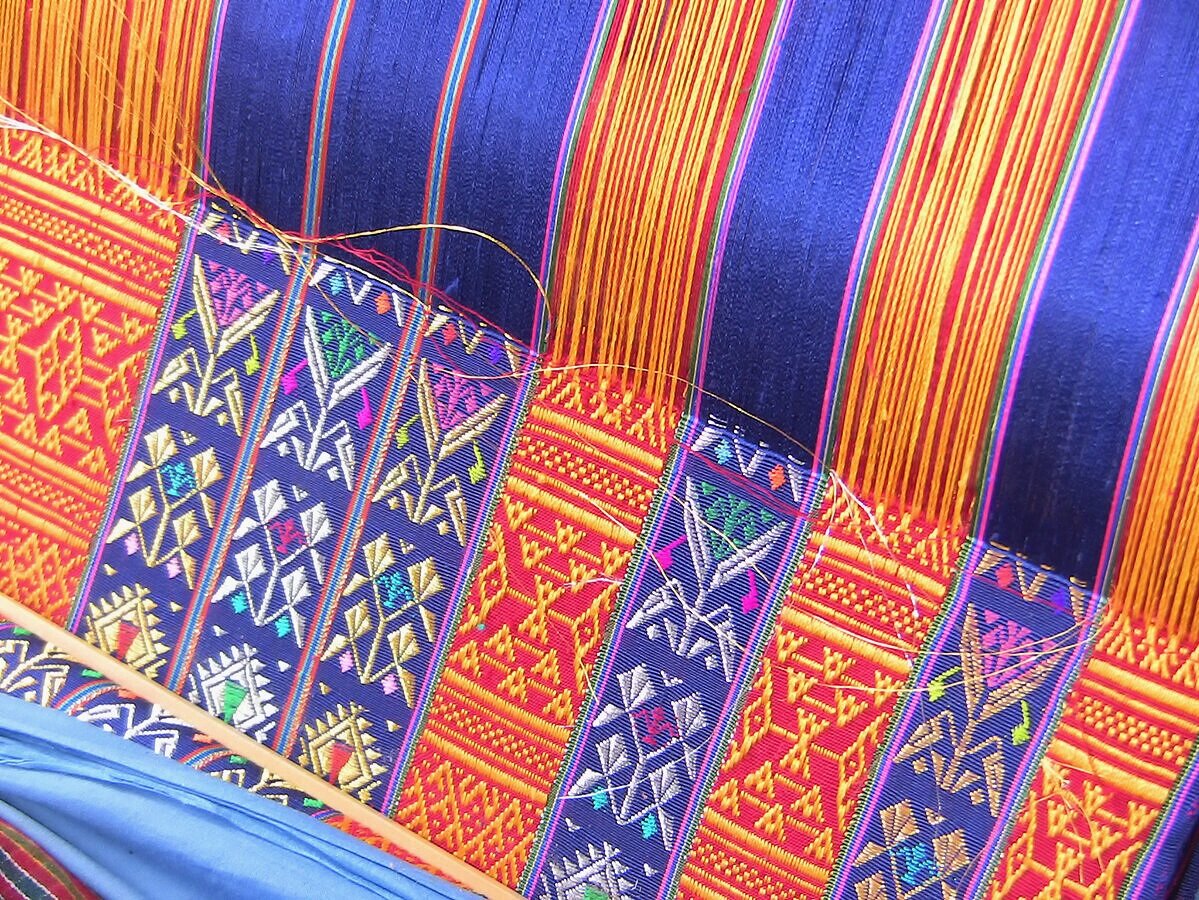
Bhutan Festival Masks
Birth of a Sacred Mask
Lemey Lopen’s studio was the great outdoors. Sitting on a bamboo mat, with a panoramic view of the eastern Himalayas still fringed with snow, he opened a metal canister and carefully selected 14 chisels and knives, lining them up like surgeon’s instruments. In front of him was a large chunk of red cedar, the finest wood for making masks. After six months of exploring the deep forest, he had found a magnificent cedar tree and quickly obtained a permit to cut the tree down, then cured (dried) the wood for several months. The remainder of the red cedar would be used for the other 15 sacred wrathful and peaceful masks and donated to the monastic carvers who made the large temple drums.
Carving the mask
Today he was making a duplicate of a magnificent yak mask he made years earlier of red cedar he had found in the forest. That mask had horns made from perfectly curved branches found lying side by side. No blade would ever touch those rare branches. As horns, they rose like arms in prayer over the yak’s head.
This striking yak mask with its exquisite, curved horns was set alongside this uncut chunk of red cedar that measured 20 inches in height with a diameter of 16 inches. Lemey Lopen carefully measured the front of the cedar block with a string so that the nose would line up in the middle. Taking a purple crayon, he marked the mask where the nose, mouth, eyes, and ears on the side would be. He drew a line down the center of the mask to the middle of where the mouth would be, allowing space for the yak’s tongue to stretch to his upper teeth. To carve the open mouth, tongue, teeth, lips, and then the nose just above these was the most difficult for Lemey Lopen.
After sketching the features on the face, he nodded to his son Sonam. As he was already in his 80s, Lemey allowed Sonam, a renowned carver himself, to assist in the initial carving of the mask, as strength and extreme accuracy were required to frame the mask. Reaching for a long-bladed knife, called a dao, Sonam started to gouge out the bottom of the mask, slowly making his way up the sides of the wood, carving the area over the ears to expose the soft salmon color of the red cedar. The measured cuts were precise, with each hack of the knife coming down in exactly the same place as the one before. After the sides were cut, Lemey Lopen felt the front of the mask with his hands, caressing it slowly, and then when satisfied it was satin smooth, he took a knife and began to carve the nose, then the outline of the eyes, and the mouth last. Like a plastic surgeon, he cut precisely with tiny movements. Slowly, it began to take shape, and I could see the yak mask being born. The general shape of the face was all there, and in the next few weeks he would fine-tune the features, adding the horns last.
Carving the mask nose
Carving the mouth and tongue
Caressing the mask for smoothness
It was late in the afternoon when Lemey stopped for his prayers, signaling it was time for us to leave. I returned weeks later to see the finished mask and was overwhelmed to learn that he was giving me the yak mask with the special horns carved years before. He had worn it as a sacred dancer at one of the Drametse Drum Dances and now wanted me to have this precious gift. He said he was preparing for his next life and wanted his story of the Drametse Drum Dance masks to be preserved for the next generation. And, Lemey Lopen (who is now on the other side of Bardo), I am keeping my promise of telling your story so that others may come to know the importance of these sacred animal masks.
The above article on master artisan Leme Lopen was based on my 2010 field survey trip to Eastern Bhutan to study the master artisans who made the 13 royal arts and crafts of Bhutan. Article and photographs are copyright protected. Kathleen Zurich Fung
Hanging altar in Lemey Lopen's one-room meditation house
Lemey Lopen, Sonam (his son), and their neighbor, who prepared their meals
Sacred masks of Drametse
Guru Rinpoche mask, Drametse monastery
Red cedar cylinders to use as drum frames. The inner core (not seen here) is used for precious masks.













